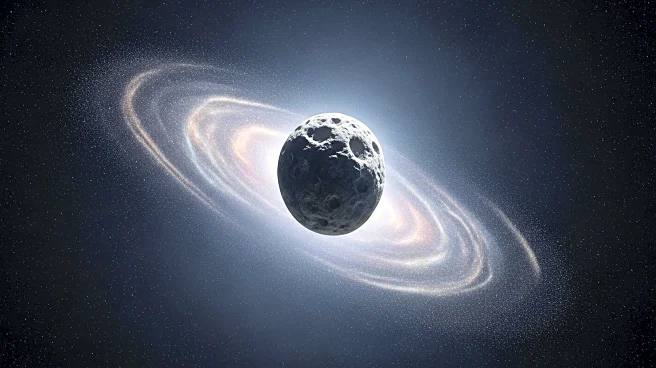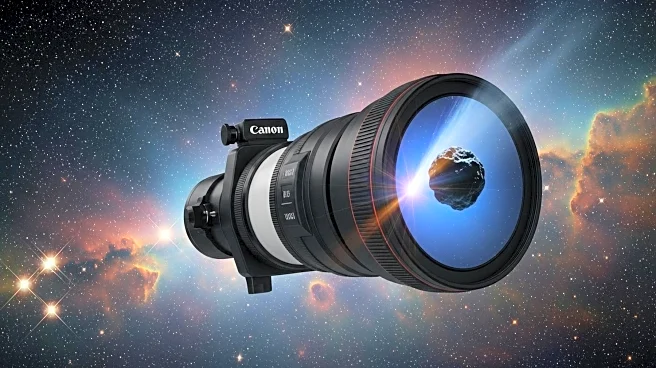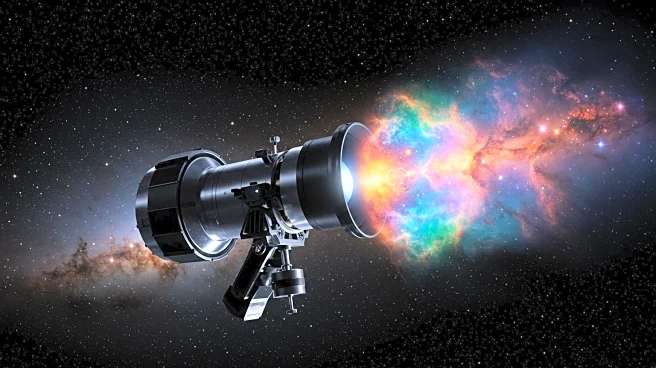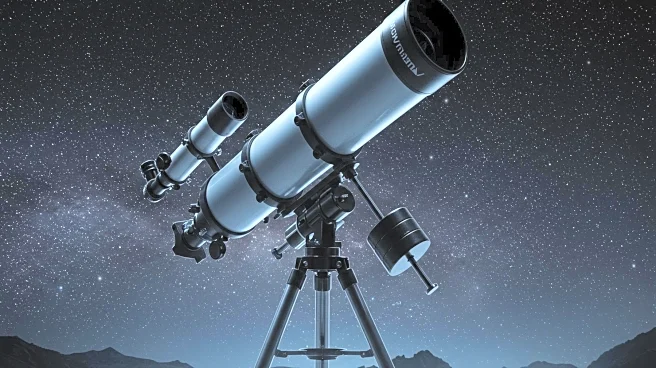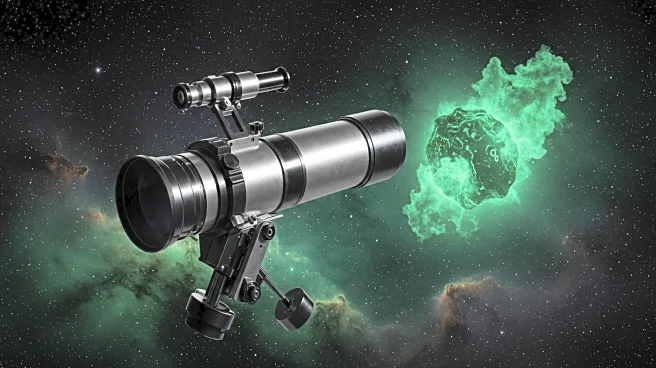What's Happening?
NASA has successfully utilized the James Webb Space Telescope to observe the interstellar comet 3I/ATLAS for the first time. On August 6, the telescope's near-infrared Spectrograph instrument was employed to analyze the comet, providing detailed insights into its size, physical properties, and chemical composition. The analysis revealed that 3I/ATLAS is composed of carbon dioxide, water, water ice, carbon monoxide, and carbon sulfide. Notably, the comet exhibits the highest ratio of carbon dioxide to water ever observed in a comet, suggesting it contains ices exposed to high levels of radiation. This observation offers valuable information about the conditions in the systems where such comets are formed. The comet, which is outgassing as it approaches the sun, was initially discovered on July 1 by NASA's Asteroid Terrestrial impact Alert system.
Why It's Important?
The observation of comet 3I/ATLAS by the James Webb Space Telescope is significant as it enhances our understanding of interstellar objects and the conditions of their formation. The unique chemical composition of the comet, particularly its high carbon dioxide content, provides clues about the environmental conditions in its system of origin. This information is crucial for astronomers and scientists studying the formation and evolution of celestial bodies. The findings could have broader implications for understanding the early solar system and the processes that lead to the formation of planets and other celestial objects. Additionally, the successful use of the James Webb Space Telescope in this observation underscores its capabilities in advancing space exploration and research.
What's Next?
Following this successful observation, NASA and the scientific community may continue to monitor 3I/ATLAS as it approaches the sun, potentially gathering more data on its behavior and composition. Further studies could focus on comparing 3I/ATLAS with other interstellar comets to identify common characteristics and differences. This could lead to a deeper understanding of the diversity of interstellar objects and their origins. The data collected may also inform future missions and research aimed at exploring similar celestial bodies, contributing to the broader field of astrophysics and planetary science.
Beyond the Headlines
The discovery of 3I/ATLAS's unique composition raises questions about the processes that lead to the formation of such interstellar objects. The presence of high levels of carbon dioxide suggests that the comet may have formed in a region with specific environmental conditions, such as a 'carbon dioxide ice line.' This could prompt further research into the formation zones of comets and the role of radiation in shaping their composition. Additionally, the age of the comet, estimated to be around 7 billion years, provides a window into the early universe, offering insights into the conditions that prevailed during that time.






